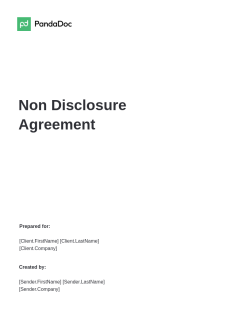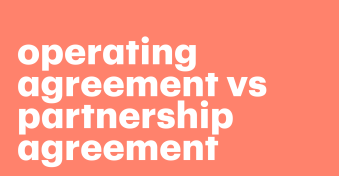Standstill agreements are an important part of business negotiations, so it’s a good idea to familiarize yourself with them.
In this guide, we’ll define what a standstill agreement is and look at some real-world examples of how they’re used.
Key takeaways
- Standstill agreements are used by businesses during deals, negotiations, court proceedings, and in other scenarios where parties have or hope to build a relationship.
- They put a halt on parties taking action against one another for a set period of time.
- They allow parties involved in deals and negotiations to assess their situation and strengthen their positions.
- Standstill agreements are often used during mergers and acquisitions but can also be useful in other scenarios.
What is a standstill agreement?
A standstill agreement is a contractual arrangement where parties agree to temporarily refrain from taking certain actions.
Basically, it prevents one party from gaining an unfair advantage or causing irreversible harm to the other during the negotiation or dispute resolution period.
Think of a standstill agreement like a pause button in contract form.
When two or more parties enter a deal, negotiation, transaction, or legal proceedings, a few things can happen.
One side can find themselves steamrolled by another, resulting in less-than-favorable terms. Deals and negotiations can become rushed and important details overlooked.
Confidential information may be made public and put companies in a vulnerable position.
Standstill agreements seek to remedy these issues, halting proceedings so no party can make a move and the status quo is maintained.
This gives all parties time to assess the situation, do some due diligence, and prepare for their next steps.
What’s included in a standstill agreement?
The details of a standstill agreement will vary according to its purpose, but they normally contain:
- The parties. Each party involved, their names, businesses, details, etc.
- The purpose. Why the parties are entering into the agreement.
- A time period. The start date, duration of the agreement, and its termination date.
- Terms. Any terms, clauses, conditions, or requirements parties need to commit to. Any standstill agreement limitation applies to the duration of the agreement.
- Consequences. The repercussions if one or more parties break the terms of the agreement.
- Signatures. All parties must sign the agreement either in person or using electronic signatures.
A standstill agreement is a contract, and once it’s been drafted, read, understood, and signed, it becomes a legally binding document.
This agreement protects the parties from any further action for the stated period.
Some contracts also include a standstill provision — a section within a different kind of contract that applies pauses or limitations to proceedings.
These can act as a compromise to an existing deal, such as offering someone a seat on a board in exchange for halting their takeover attempt.
Real-world standstill agreement examples
Everyone loves examples.
That’s why free trials of products and a comprehensive library of templates is always a bonus.
What better way to understand something than by looking at its real-world applications, right?
To get a deeper understanding of standstill agreements, let’s look at the industries that most commonly use them and consider some examples of them in action.
Mergers and acquisitions
A lot of confidential information changes hands during business mergers and acquisitions.
There can also be a power imbalance between larger, wealthier companies wishing to merge with or acquire smaller companies.
For these reasons, standstill agreements are common during mergers and acquisitions. In this context, they:
- Halt proceedings so no company can make a move against another
- Prevent companies from publicly announcing their intent to buy or merge
- Prevent third parties from finding out about M&As and utilizing confidential information and vulnerabilities to swoop in with their own deals
- Prevent companies from considering or accepting deals with third parties
- Prevent parties from buying shares in target companies
- Prevent companies from doing anything that might jeopardize a deal, such as using proxies, changing board members, or affecting stock prices
- Prevent hostile takeovers by thwarting the efforts of the acquirer to side-step the target’s management by appealing to shareholders
One example of how a standstill agreement helped one company fend off another is the attempted hostile takeover of Airgas, Inc. by its competitor Air Products & Chemicals, Inc. (we’ll call them Airgas and Air Products for short).
Air Products appealed to shareholders with a $5.9 billion offer, valuing the company at $60 per share. Airgas claimed this valuation was much lower than its own and began implementing a “poison pill” defense against the takeover.
Part of this defense was a standstill agreement that prevented Air Products from approaching shareholders with its offer.
This gave enough time for Airgas to prepare for a legal battle, which they ultimately won.
The Wall Street Journal called the win a “landmark decision” regarding the power balance between a company’s board and its shareholders.
NDAs
Non-disclosure agreements often contain standstill provisions too.
Like a separate standstill agreement, they prohibit parties from taking certain actions during a deal or negotiation.
One recent example is Elon Musk’s attempts to acquire the website formerly known as Twitter (now X).
Initially, the two parties came to terms by promising Musk a seat on the Twitter board.
The NDA contained a standstill provision that stated Musk couldn’t increase his Twitter holdings past 14.9% while on the board or for 90 days thereafter.
This deal was eventually rejected by Musk, but its purpose was to avoid Musk’s initial threat to go around board members and approach shareholders in a hostile bid to own the company.
This is both an example of a standstill provision within an NDA and a look at how standstill agreements can help during mergers and acquisitions.

NDA Template
Used 13434 times
4.3 rating (21 reviews)
This NDA Agreement Template can be used between a company and a vendor or subcontractor to establish confidentiality between the two parties.
Use this templateLawsuits
Bringing a claim to court has time limitations.
Limitation dates vary a lot according to the type of claim and the local laws of the area, but once the limitation has expired, a claim will likely be rejected.
Standstill agreements can extend this limitation date, giving claimants more time.
Standstill agreements also help during litigation by giving parties more time to gather evidence and negotiate. They can even help avoid lawsuits by allowing parties to consider alternative dispute resolutions.
So, instead of taking a claim to court, the parties can settle in a more beneficial and amicable way.
Financial obligations
Standstill agreements are often used during disputes between lenders and borrowers.
When a borrower can’t repay a loan on schedule, there are a few options:
- Asset seizure
- Property foreclosure
- Bankruptcy
- The lender and borrower work together to restructure the loan
Clearly, options one to three aren’t ideal for anyone.
Borrowers lose out, and lenders risk getting back far less money than the original loan cost them to issue.
Option four is usually the first and best course of action.
During loan restructuring, the borrower needs time to assess their situation and restructure their assets to free up capital.
This is where a standstill agreement comes in.
During the standstill agreement, the lenders agree to lessen or halt repayments until the expiry date. They give the borrower a period of time to make good on their payments without risking financial or legal repercussions.
Outside of loans, businesses that have fallen on hard times might also struggle to pay their vendors, workers, landlords, or other entities that require payment for goods or services.
A standstill agreement can give a struggling business more time to determine how it’ll pay its creditors. This can help negate heavy losses, like business contract cancellation or the destruction of an important business relationship.
Union negotiations
Standstill agreements are often used in union negotiations to prevent both companies and unions from acting while both take time to assess the situation and negotiate.
For example, the 2022 standstill agreement between the rail industry and the Brotherhood of Railroad Signalmen union halted attempts to strike for two years in a bid to resolve pay and working condition issues without a country-wide walk-out.
Another example is the 2008 standstill agreement between United Airlines and the Air Line Pilots Association (ALPA). The agreement promised that pilots would not disrupt United Airlines operations (using tactics like calling in sick) for the duration of the negotiations.
In this context, standstill agreements seek to halt actions that might hurt relationships and negotiations between combative parties.
Achieve successful standstill agreements with PandaDoc templates
Standstill agreements are a useful tool when it comes to business deals like mergers and acquisitions, negotiations such as lawsuits and union action, and financial issues involving debt repayment and loan restructuring.
They hit pause on proceedings, allowing all the parties involved some breathing room to consider their options and strengthen their positions.
However, standstill agreements are just one of the hundreds of contracts businesses have to deal with each day.
Fortunately, PandaDoc’s contract management software can help you automate, secure, and streamline all your document needs. Why not sign up for a trial today?
Disclaimer
PandaDoc is not a law firm, or a substitute for an attorney or law firm. This page is not intended to and does not provide legal advice. Should you have legal questions on the validity of e-signatures or digital signatures and the enforceability thereof, please consult with an attorney or law firm. Use of PandaDoc services are governed by our Terms of Use and Privacy Policy.


